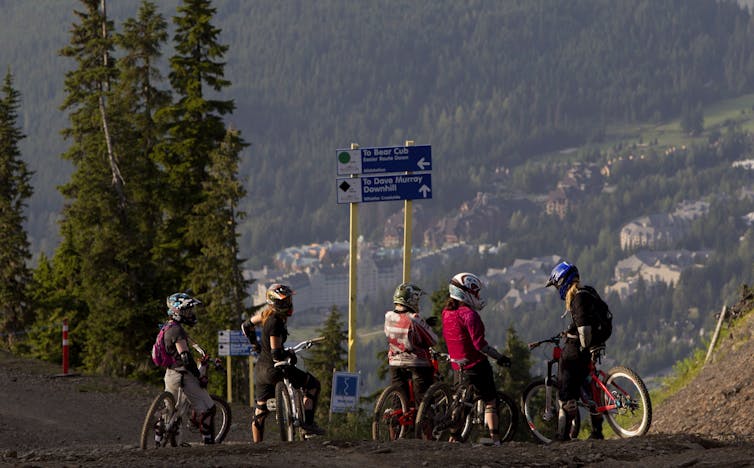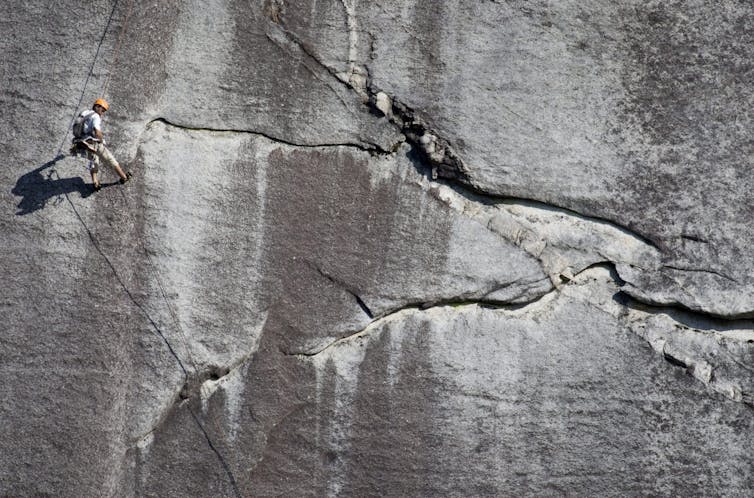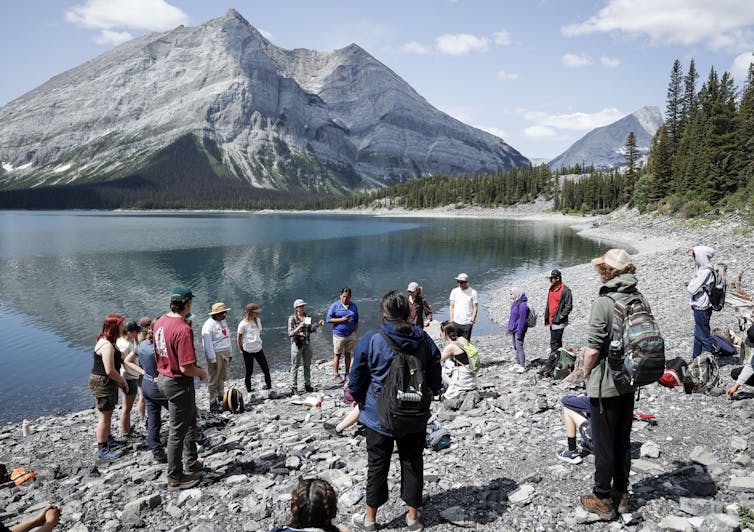As climate change continues to impact the way we interact with our planet, it’s critical to consider ways we can encourage youth to participate in climate action initiatives.
Young people across Canada are feeling frightened about the future of the planet. A Canadian study published in 2023 surveyed 1,000 young participants on their feelings about climate change. Sixty-six per cent of respondents said they felt anxiousness or hopelessness about climate change, while 78 per cent said it impacts their overall mental health.
There are a number of ways to approach this overwhelming emotion, considering it could result not only in poor quality of life for youth but also continued inaction for the planet.
My research in outdoor physical education leads me to consider more positive behaviour for youth in association to climate change that could likely benefit youth and the planet. The challenge is finding opportunities to develop pro-environmental behaviours and environmental stewardship with Canadian youth.
Read more: 6 ways to build resilience and hope into young people's learning about climate change
It’s about more than time outdoors
When looking to develop pro-environmental behaviours, one way could be to simply encourage more time outdoors. But research from Germany suggests that just interacting with nature is not enough; rather, young people need to find ways to engage with nature and use the natural landscape to develop an emotional connection with the environment.

According to the German study, certain sports can lead to more environmentally sustainable attitudes and behaviours from participants. Some sports in particular — like cross-country skiing, mountain biking or triathlon — increase those positive behaviours more than others. This isn’t simply because participants are alone within a natural setting; it’s because the focus of the sport is on the natural landscape.
To explain a bit further, soccer, for example, is typically played outside but often on a manicured, sometimes artificial, field that is in many ways devoid of any natural influence.
Alternatively, mountain biking requires participants to ride on trails that take them directly through forested areas or spaces that are selected based on their unique natural landscape. As athletes participate in sports more frequently and spend more time within nature, they then develop a stronger emotional connection to the space they’re in. This leads to pro-environmental behaviours and attitudes, which can then generate environmental stewardship.
Read more: Earth Day 2024: 'Green muscle memory' and climate education promote behaviour change
Rock climbing
Within rock climbing groups and organizations, there is evidence suggesting members frequently participate in beneficial environmental stewardship projects. Outdoor rock-climbing groups typically manage spaces — sometimes privately owned, but frequently under government jurisdiction in provincial or national parks — to ensure safe and responsible climbing practices. Climbers rely on ropes, equipment and bolts to ensure safety as they’re climbing.
But another obvious factor is the rock face they climb. The connection to rock and the climbing routes over those rock faces help foster a sense of environmental stewardship within climbers. Similar to mountain biking, the process starts with an introduction to the sport, but slowly develops into more care and attention paid to the natural spaces where climbers practise their activity.

One American study indicates that rock climbing organizations often find opportunities to clean up the areas where they climb, and also look to maintain the natural features of that space.
The research finds that for climbers, the challenge is to maintain natural spaces and keep the rock as pristine as possible. This also extends to conservation efforts to ensure that space maintains its use for climbing as opposed to turning it into a more urban or commercialized area.
The joy that participants received from the sport of climbing initiated this environmental stewardship and maintained progressive action in local environmental initiatives.
Element of physical risk
One thing to note is that climbing and mountain biking do involve an element of physical risk.
Doing some research on these sports can help youth assess risks alongside what can be gained from participating. But it’s also important to acknowledge that encouraging young people to foster deeper connections to nature as opposed to having simple interactions with outdoor spaces doesn’t mean they have to cycle down a mountain or climb a massive rock wall.
Risk cannot be completely eliminated from outdoor sports and recreation, but there can be great social and personal benefit from participating in these types of activities.
Instead of a high-risk sport, educators and outdoor leaders can influence participants with simpler actions. I am aware of outings involving outdoor hikes, or taking time at night to gaze at the stars and listen to the sounds of nature, that have sparked in young people an interest in outdoor spaces — and caring for them.
Such experiences can then lead young people to continue to explore outdoor adventure and sport, that can , significantly, foster an appreciation of natural settings through direct interaction as well as a positive sense of community. This can be a starting point to help alleviate feelings of hopelessness to climate change.
Read more: Teachers need bolder action from our school boards to educate in and for a climate emergency
Addressing potential harms, amplifying benefits
Despite the benefits of participating in outdoor sports, there is a need to acknowledge that participation can have some negative impact on the environment.
For example, interaction with nature through sport can impact natural habitats and has the potential to alter behavioural patterns of animals. Furthermore, there is a risk of erosion of natural spaces, as well as the slim potential for the movement of invasive species.
This being said, it’s critical to consider what we can gain from supporting youth to participate in outdoor sport and education when such activities are planned with attentiveness and care.










 English (US) ·
English (US) ·